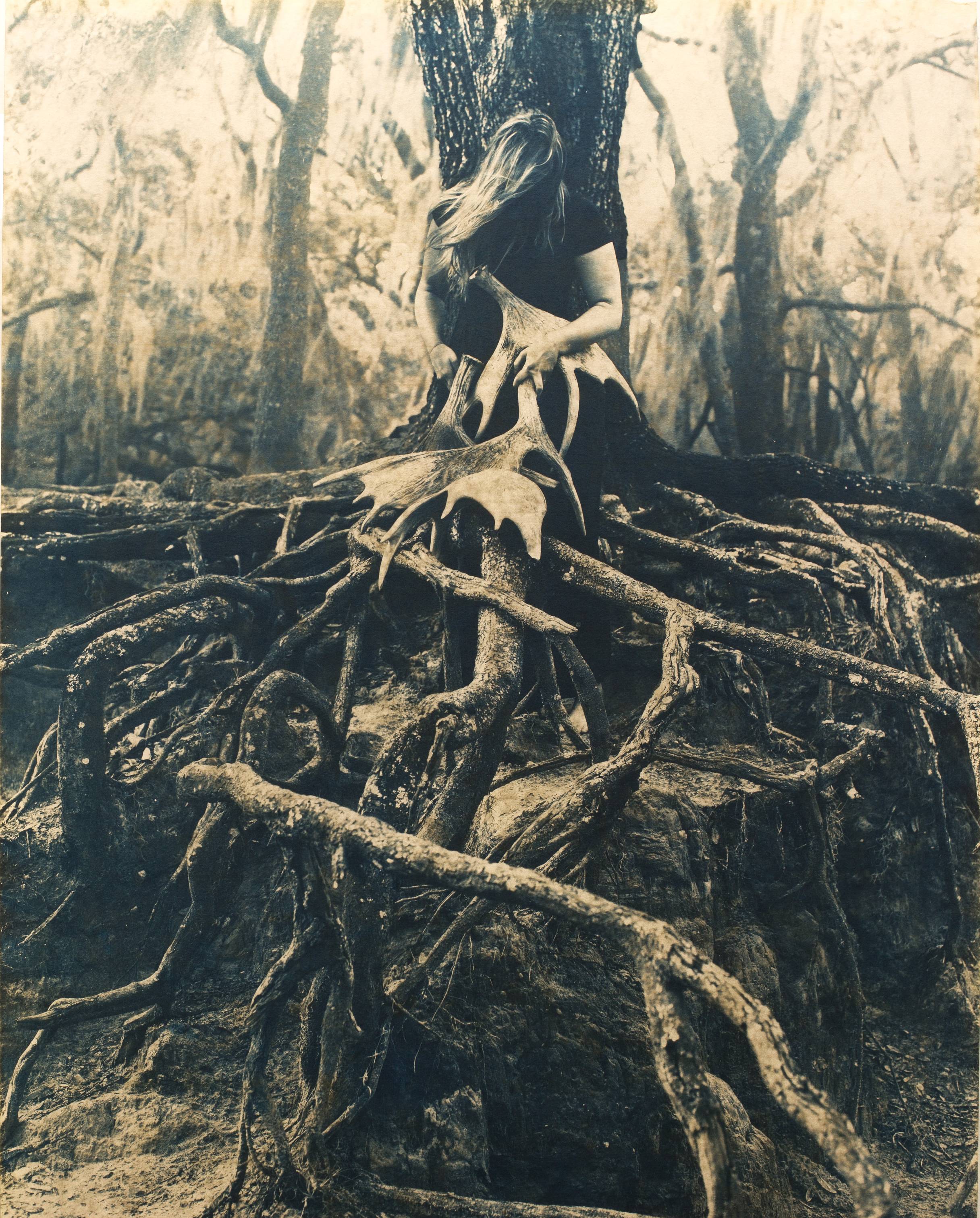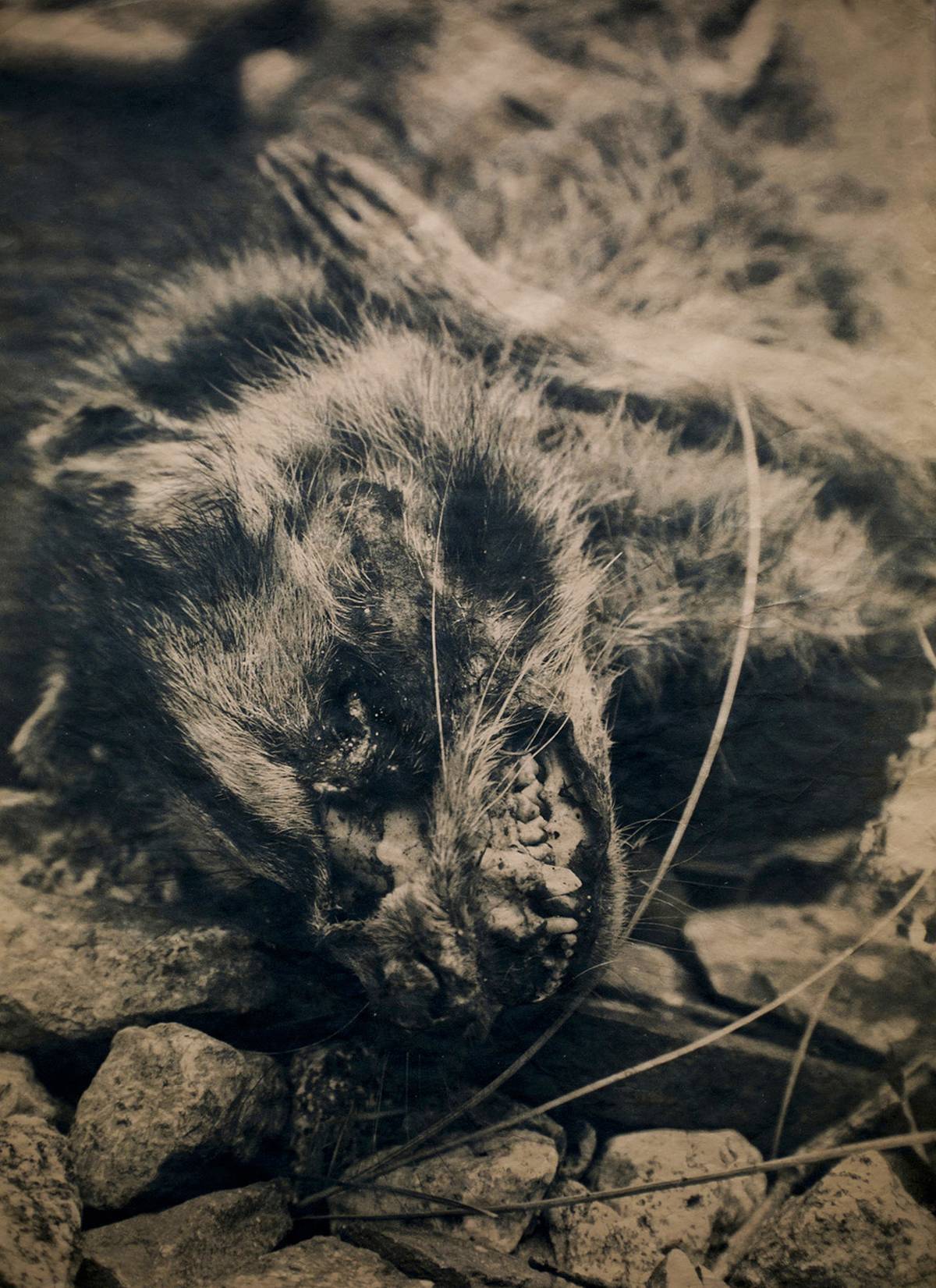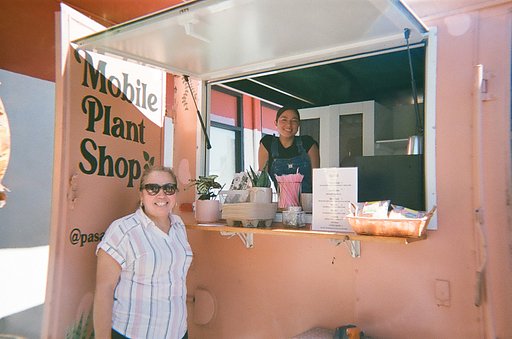Where the Roots Rise — Jaime Aelavanthara’s Chilling Cyanotypes
2 23 Share TweetIn her spare time, Jaime Aelavanthara traipses the rugged marshlands of Mississippi, Louisiana, and Florida taking photos of decomposing carcasses, broken branches and decaying petals. An assistant professor of photography at the University of Tampa, Jaime has a trained eye for spooky sepia settings and bewitching analogue textures. Her series of tea-stained cyanotypes, Where The Roots Rise, is a stunningly surreal portrayal of life and death, and a chilling reminder that the two can so easily coalesce.

Hey Jaime! Can you tell us a bit about your photography background?
Growing up, I thought I’d be a veterinarian. At age 16, I was creating photographs nonstop. Entering college, I decided to pursue a degree in graphic design at the University of Mississippi. I took my first darkroom photography class there and instantly switched to photography! I am a strong believer that if you pursue what you are passionate about, the rest will work itself out. I decided to continue the journey and pursue an MFA in photography at Louisiana Tech University.
My three years at graduate school allowed me to continue experimenting in photography, while refining my creative practice and gaining teaching experience. As the head of the photography program at the University of Tampa, it’s exciting to now teach the very subjects that captivated me as a student, including darkroom photography, experimental photography and digital photography. I’d describe my style as rustic, ethereal, lyrical, haunting, even Southern (since this is the region of the United States I live and work in).
We were really struck by your beautiful expression of decay with your photo series Where the Roots Rise. Can you tell us a bit more about your motives behind the project?
Upon moving to Florida this past year, I found a magical landscape of knarled, knotted, twisted, exposed oak tree roots in a local park that used to be a phosphate mining area. Where the Roots Rise emerged to reflect the sense of place that inspired this project. I'm interested in the human condition as a thread to how humans, plants, and other animals are all connected through natural processes of death and decay.
I work with hybrid processes (cyanotype printing in the darkroom), so my work combines both analogue and digital methods. Some of the work was shot on a 35 mm or 4×5 camera, and then enlarged and printed on transparency film as digital negatives, so I can contact print the final pieces. I've explored this location dozens of times now with several cameras including a Holga, a pinhole camera, and a digital SLR. The majority of the images shared in this article are made with my first film camera, a 35 mm Canon FTB that belonged to my dad, or a 4×5 view camera.
Owing to their unique analogue scratches, marks and dust, it would be easy to mistake your images as lost artefacts from bygone years. How exactly do you weather your shots?
These cyanotype prints are contact printed on a warm Japanese rice paper, made from gampi tree fibers. I hand paint the cyanotype emulsion onto paper that often wrinkles, rips, or tears. I tea-stain the physical prints afterwards, so that they appear aged, earthy, and almost like tanned animal hides. If the paper fibers come loose during the printing, they resemble dust spots and marks, so each print is truly one-of-a-kind.
You have a palpable interest in nature and the simultaneity of life and death. How do you get your hands on props like skeletons, debris and butterflies to shoot with your models?
The butterflies are one of the first props I worked with; these were a purchase from a discount store and are actually artificial, but they translate realistically onto film, so I worked with them in several photographs — taping them on my face as if they are alive and in sinister numbers. If a prop is ethically sourced, I don’t mind a purchase here-and-there.
Growing up amongst the woods of rural Mississippi with my siblings, it was common to find and collect treasures from the woods like a turtle shell, a bone, or a bird’s nest. This practice has definitely continued in my work. Some exotic items — a loggerhead snapping turtle shell from the Marshall Islands, and a large alligator skull, were loaned to me by the late Dr. Gary Zumwalt, a geology professor and wildlife photographer who was a supporter of my work.
A large pile of cow skulls and bones came from an art department’s supply of still life material. A friend of mine once gifted me an array of bird skeletons that had died inside an old building. Now that I’m in a new area in Tampa, Florida, I’m back to collecting everyday items I might find — especially tropical plants (palm trees) that are new to me.
Do you have a favorite photo? Can you tell us about the story behind it?
“La Llorona” is a favorite. All of the portraits you see are self-portraits. This was my first attempt to set one up using my Canon FTB 35 mm film camera and using the timer on this camera for the first time. I work alone, so I pre-focused the camera, set it at F8, and ran into position. The light was changing on the wooded path, and I wasn’t sure if I’d be in focus, much less, exposed properly. I was pleasantly surprised after developing the film. To explain the title, La Llorona is a mythological woman, translating to “the weeping woman,” and she typically wears white and is said to roam the rivers and creeks.
In an undeniably digital age, why do you still choose to shoot on film?
I enjoy the mystery and element of anticipation that comes with shooting on film, as it literally forces you to slow down and to wait before you see the result. There’s room for happy accidents at all stages of the process. I also find it exciting anytime someone can use older or analogue technologies in a digital age and bring a contemporary vision to their work.
Finally, what’s coming up for you this year? Any interesting projects you’re working on?
I'm still working on my latest series Where the Roots Rise, and looking forward to getting more new work made for a solo exhibition at the Eichold Gallery, at Spring Hill College in Mobile, Alabama for 2019. I was recently gifted some color film, and I’m also looking forward to shooting with a medium format twin lens reflex camera. The University of Tampa, where I am a faculty member, is getting a brand new darkroom facility, so that’s a huge change coming this year, both professionally and personally!
If you'd like to see more of Jaime's incredible work, you can visit her website.
2018-10-31 #people #halloween




























2 Comments